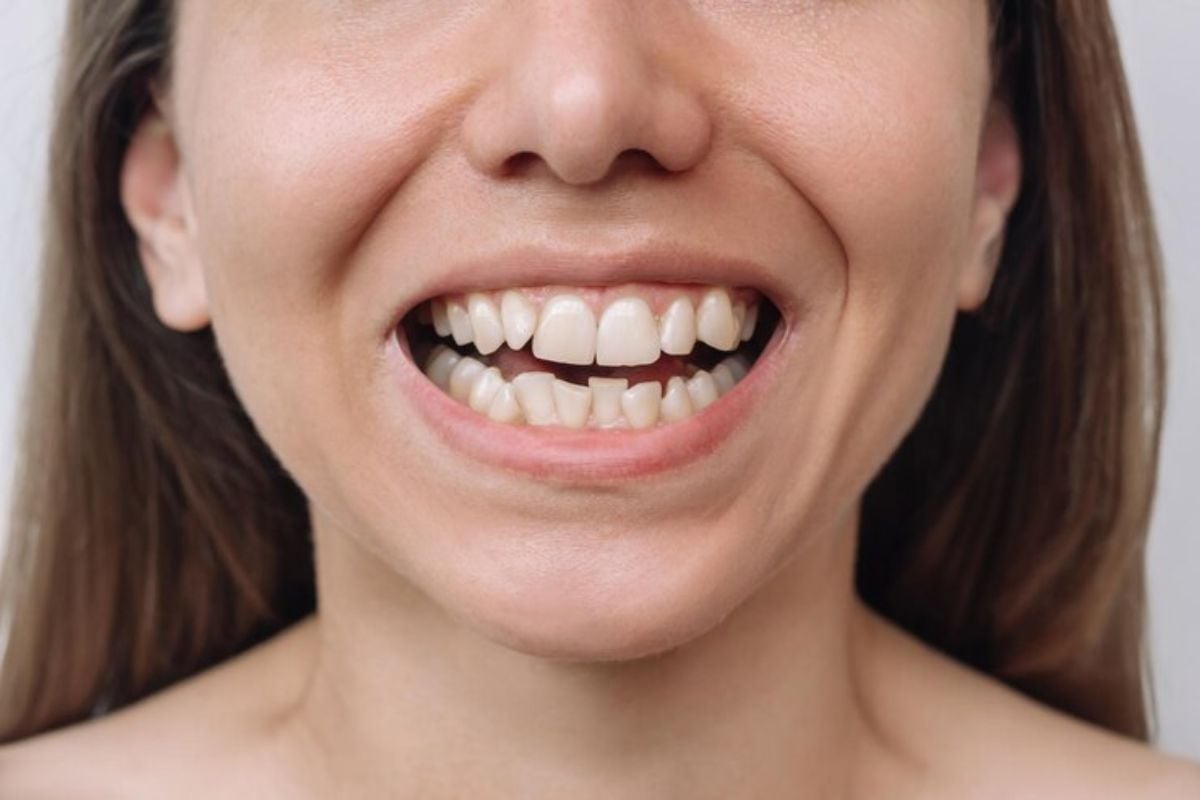When it comes to treating overlapping teeth, both clear aligners and traditional braces are effective options. Each treatment method has its own unique advantages, and choosing the right one depends on factors such as the severity of the overlap, aesthetic preferences, and treatment goals. In this article, we’ll compare clear aligners and braces to help you make an informed decision about the best treatment for your Overlapping Teeth Treatment.
Understanding Overlapping Teeth:
Overlapping teeth occur when one or more teeth are positioned too closely together, often causing them to crowd or overlap each other. This condition can lead to a misaligned smile, difficulty cleaning your teeth properly, and sometimes even bite issues. The treatment options available, such as clear aligners and braces, are designed to gradually shift the teeth into proper alignment, providing both aesthetic and functional benefits.
Common Causes of Overlapping Teeth
- Genetics: A family history of dental issues may increase the likelihood of overlapping teeth.
- Jaw Size: A smaller or narrower jaw may not have enough room for all teeth to grow properly.
- Tooth Eruption Issues: Teeth that grow at improper angles or don't fully emerge can cause overlapping.
- Premature Tooth Loss: Losing baby teeth too early can result in teeth shifting and overlapping as they move into gaps.
Traditional Braces for Overlapping Teeth:
Traditional braces have been the gold standard for treating overlapping teeth for decades. They are made up of metal brackets attached to the teeth, connected by wires, and are gradually tightened to shift the teeth into the correct position. Below are the benefits of using traditional braces for overlapping teeth:
- Effective for Severe Cases: Traditional braces are highly effective for severe overlapping and complex dental issues.
- Precise Control: Braces offer the orthodontist complete control over the movement of each tooth, ensuring they are properly aligned.
- Long-Term Results: Once braces are removed and a retainer is worn, the results are permanent, especially with proper care.
However, traditional braces come with some downsides, such as being noticeable and requiring more maintenance during treatment.
Clear Aligners: A Discreet Alternative
Clear aligners, such as Invisalign, have become a popular treatment option for overlapping teeth, especially among adults and teenagers who prefer a more discreet solution. These custom-made plastic trays are virtually invisible and gradually move your teeth into alignment. Some of the advantages of clear aligners include:
- Invisible Treatment: Clear aligners are virtually transparent, making them an attractive option for people who want a more subtle way to straighten their teeth.
- Removable for Easy Maintenance: You can remove clear aligners when eating, drinking, brushing, or flossing, which makes it easier to maintain good oral hygiene throughout treatment.
- Comfortable: The smooth plastic design of aligners is more comfortable than metal braces, with no brackets or wires to irritate the inside of the mouth.
Clear aligners work best for mild to moderate cases of overlapping teeth, and they may not be suitable for more complex issues that require significant tooth movement.
Treatment Duration: Braces vs Clear Aligners
One of the factors to consider when deciding between braces and clear aligners is the length of treatment. Treatment duration can vary depending on the severity of the dental misalignment, but there are some general trends to keep in mind:
- Braces: Traditional braces usually take anywhere from 18 to 36 months to complete, depending on the severity of the overlapping teeth and how much movement is required.
- Clear Aligners: Clear aligners typically take 12 to 18 months for mild to moderate cases of overlapping teeth. However, more complex cases may require a longer treatment time, and multiple aligners will need to be replaced throughout the process.
Both options will require follow-up appointments with your orthodontist for adjustments and progress checks.
Maintenance and Care During Treatment:
Proper maintenance and care are essential for both braces and clear aligners to ensure effective treatment. Here’s how to care for each option:
- Braces: With traditional braces, you’ll need to avoid certain foods that can damage the brackets and wires. Regular brushing and flossing are essential to keep your teeth clean and avoid plaque buildup. You’ll also need to attend periodic adjustment appointments with your orthodontist.
- Clear Aligners: Since clear aligners are removable, you’ll need to clean them regularly by brushing them gently with a soft toothbrush. You must also wear the aligners for the recommended amount of time each day (usually 20 to 22 hours) to ensure they work effectively.
It’s important to follow the care instructions provided by your orthodontist to ensure the best possible outcome from your treatment.
Choosing the Right Treatment for You:
Choosing between clear aligners and traditional braces depends on your personal preferences, the severity of your Overlapping Teeth Treatment, and your lifestyle. Consider the following factors when making your decision:
- Severity of Overlap: Braces are generally better suited for severe overlapping teeth or complex cases that require significant tooth movement.
- Aesthetic Preferences: If you prefer a more discreet treatment, clear aligners offer an almost invisible solution.
- Budget: Traditional braces tend to be more affordable than clear aligners, which may be a factor in your decision.
- Lifestyle: Clear aligners are removable, making them more convenient for people who want to maintain their regular routines without dietary restrictions or additional maintenance.
Consult with your orthodontist to determine which treatment option is best suited to your needs. They can help you evaluate your specific case and guide you toward the most effective treatment.
Conclusion:
Both clear aligners and traditional braces are effective treatments for overlapping teeth, and each option has its advantages. Braces offer precise control for severe misalignments, while clear aligners provide a more discreet and comfortable solution for mild to moderate cases. The choice between the two depends on factors such as the severity of your condition, aesthetic preferences, treatment duration, and budget. Regardless of the treatment you choose, orthodontic care can help you achieve the straight, beautiful smile you’ve always wanted.

